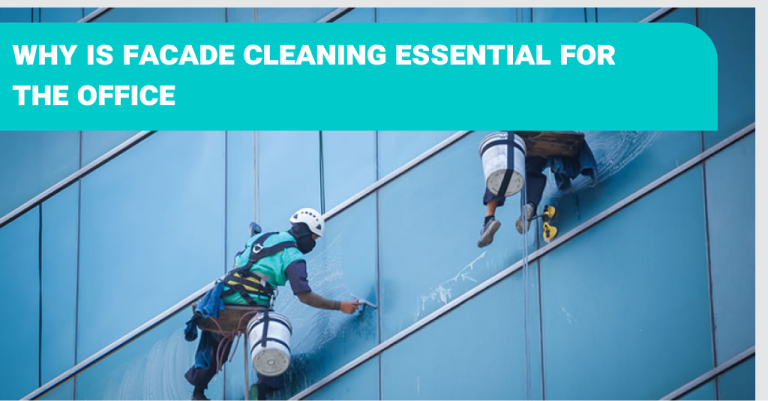Table of Contents
Everyone wants a spotless home, and if you know how to clean carpets properly, you can make it happen. If you’re on your own time, you can do this job and save you money. Carpet repair professionals with years of experience should be called in if time is of the essence.
There are numerous benefits to having your carpets professionally stretched and cleaned. Therefore, you need to know what steps to take for stretching and repairing to restore your carpets.
What Is Carpet Stretching?
Carpet stretching is the tried-and-true fix for those annoying lumps, waves, or loose patches that show up after years of daily foot traffic, moving furniture around, or just the usual wear and tear. Imagine your carpet as a fabric that’s become slack over time stretching pulls it taut again, smoothing out ripples and securing it firmly to the tack strips underneath. This not only gives your room a more polished look but also helps prevent trip hazards and extends the lifespan of your carpet. In short, it’s like giving your floor a facelift without needing to replace a thing!
What’s the Difference Between Carpet Stretching and Carpet Repair?
It’s easy to mix these two up, but they serve different purposes when it comes to refreshing your floors.
Carpet stretching addresses those ripples, bumps, or loose spots that develop over time, usually from wear and tear or poor installation. The process involves tightening the carpet and reattaching it to the tack strips around the edges think of it as giving your carpet a facelift so it lays flat and looks tidy once again.
Carpet repair, on the other hand, zooms in on smaller trouble spots: tears, burns, stubborn stains, or fraying seams. This technique replaces or fixes only the affected area, making it more of a surgical intervention rather than an overall refresh.
So, while stretching rejuvenates your entire carpet and gives it back its neat, smooth appearance, repair targets specific problem patches saving you from needing a full replacement.
Carpet Cleaning Benefits
Your carpet, which is likely dirty and harbouring bacteria, requires a thorough cleaning for a better home environment. Carpets should be cleaned frequently because doing so can help reduce allergies in the home. A carpet looks brand new after it has been professionally cleaned and carpet stretching services have been performed after loose carpet tack strips have been removed.
Because of this, a freshly cleaned carpet might look better, which is good for the overall comfort of your home. The carpet can be cleaned in a variety of ways that are also cost effective. Carpets can be cleaned with soap and water, hydrogen peroxide for stains, a spray made of baking soda and vinegar to get rid of unpleasant odours, and vinegar for removing food and drink spills.
Benefits of Re-Stretching
Because of this natural ageing process, carpets need to be stretched periodically to maintain their original dimensions and appearance.
How to Tell if Your Carpet Needs Stretching
Over time, even the best-laid carpets start to show a few telltale hints that they’re ready for a little TLC. Recognizing these signs early can save you from more costly repairs down the line.
Here’s what to look out for:
- Visible wrinkles and ripples: If your carpet no longer lies flat and you notice bumps or wavy lines running across the surface, that’s a clear sign it needs to be re-stretched.
- Loose or lifting edges: When the carpet starts pulling away from the wall or seems slack near the baseboards, stretching can help restore that snug fit.
- Bunching or bulging in high-traffic areas: Have you started tripping over subtle humps in your living room or hallway? Excess movement and bunching indicate your carpet has lost tension.
- Difficulty with doors: If interior doors suddenly catch or drag on the carpet, stretching may be necessary to return everything to its original, smooth state.
Keeping an eye out for these symptoms ensures your carpets not only look their best, but also maintain their integrity and safety. Addressing these issues promptly will also make any cleaning results more effective and long-lasting. No creases will form in the carpet, leading to a more accurate conclusion, and stretching carpets is a must.

How Does Carpet Stretching Enhance Safety?
Loose carpets often develop ripples, bumps, or waves over time especially in high-traffic areas. These imperfections don’t just look untidy; they also create hidden tripping hazards for anyone walking through your home. By professionally re-stretching your carpet, you smooth out those problem spots and create a flat, secure surface. This simple process can go a long way toward preventing slips, trips, and accidental falls, especially for children, elderly family members, or guests who may not know your space as well.
Ensuring your carpet lies flush against the floor means you’re not just improving appearance, but also maintaining a safer home environment for everyone.
You can do this on your own or call a professional.
Is Carpet Stretching Difficult to Perform?
Carpet stretching isn’t exactly a walk in the park it calls for precise technique and the right tools. While ambitious DIYers may be tempted to give it a try, most find that achieving that taut, seamless finish is more challenging than it looks. An improperly stretched carpet can quickly develop ripples, lumps, or uneven spots, defeating the whole purpose of the job.
Professionals, armed with years of experience and specialized equipment like power stretchers and knee kickers, make quick work of what could be an afternoon of frustration for the uninitiated. If you’re not familiar with the process or don’t have the necessary tools on hand, it’s almost always best to reach out to seasoned carpet installers or reputable flooring experts think of it as saving yourself from a world of carpet chaos.
There are several benefits to having your carpets professionally cleaned and re-stretched. As a result, after having the carpet re-stretched, you will find that it lasts much longer. Simultaneously, the effects of shrinkage will become less noticeable.
How Long Does Carpet Stretching Take?
The amount of time needed to properly stretch a carpet depends on a few factors, including the size of the room and the overall condition of the carpet itself. In most cases, you can expect the process to take just a couple of hours for a standard living space. Of course, larger rooms or carpets that require extra repairs may take a bit longer, while smaller spaces can often be wrapped up more quickly.
If you’re getting multiple rooms stretched or the carpet has significant wrinkles or old damage, keep in mind there may be some added time involved. However, compared to a full replacement, it’s still a quick and non-disruptive way to restore your carpet’s look and feel.
How Is Carpet Stretching Done?
Carpet stretching is a process that helps to eliminate wrinkles, ripples, and bumps that develop over time. It usually starts with a careful inspection to pinpoint the trouble spots. Professionals use specialised tools like power stretchers and knee kickers to gently but firmly pull the carpet taut.
Here’s how it typically works:
- First, the carpet is detached from the tack strips along the edges.
- Next, the stretcher is used to pull the carpet tight across the room, removing any looseness or folds.
- Once the carpet is properly aligned and tensioned, it’s reattached to the tack strips, ensuring a smooth, even surface.
- Excess carpet is then trimmed if necessary.
While you might be tempted to tackle this yourself, having an expert handle the job ensures the carpet is stretched evenly and the results last longer.
Can Carpet Stretching Add Value to A Home or Business?
Absolutely! Stretching your carpet doesn’t just tidy up wrinkles and remove unsightly lumps it actually improves the look and feel of your entire space. A freshly stretched and cleaned carpet instantly creates a more inviting atmosphere, which is crucial whether you’re hosting guests at home or making a first impression with clients at your business.
Think of it this way: clean, smooth carpets signal care and attention to detail. This can subtly boost the perceived value of your property for visitors, prospective buyers, or anyone who enters your premises. In fact, pairing carpet stretching with a deep professional clean is one of the easiest ways to refresh your interiors without a major renovation. It’s a simple upgrade that often pays off in comfort, aesthetics, and overall value.
Can Carpet Stretching Save on Replacement Costs?
Absolutely carpet stretching is a clever solution for those looking to extend the life of their existing flooring without breaking the bank. If your carpet is starting to wrinkle, bunch up, or lift at the edges, these are common signs that it needs stretching not replacing. By addressing these issues promptly, you avoid the much higher expense of purchasing and installing brand new carpet.
A professional stretch can restore your carpet’s smooth appearance and prevent further damage. This proactive step not only delays the need for a full replacement but also keeps your carpet looking tidy and maintained. In short, rather than emptying your wallet for a new carpet, regular stretching can help you enjoy your current one for years to come, all while keeping your home looking sharp and saving you money in the long run.
Carpets that have seen a lot of foot traffic should get these basics checked out and has various benefits of carpet stretching and cleaning. You can give your carpet the care it deserves if you take a little additional time to clean. In order to determine the true state of the carpet, you could have experts pay a visit. It’s important that this happens regularly.
Therefore, whether the carpet is dirty or wrinkled, you should treat it the same. It’s possible to achieve the same results with some at-home natural remedies or expert help.
How Much Does Carpet Stretching Cost?
The cost of carpet stretching isn’t set in stone it depends on a few key factors, such as the size of the area that needs attention and the general condition of your carpets. Large rooms or hallways that have experienced a lot of wear will naturally cost more than a small patch in the corner.
Prices usually range from $40 to $80 per room, but complicated cases think stubborn wrinkles or ripples might lean higher. For a precise estimate, it’s best to reach out to a reputable local carpet specialist. Companies like ServiceMaster, Stanley Steemer, or your neighborhood pros can quickly provide quotes based on your needs. This way, you know exactly what to expect before the work begins.

How Long Should Carpeting Last?
Just like most things in the home, carpets don’t come with an expiration date stamped on them. The lifespan of your carpet really hinges on how much action it sees, the quality of its fibres, and how you care for it over the years. On average, well-maintained carpets can hold up for anywhere from five to fifteen years.
High-traffic areas like living rooms or hallways may show signs of wear and tear much sooner, especially if muddy shoes and pet paws are regular guests. Conversely, if you vacuum often, keep up with routine cleaning, and use protective treatments, you can help your carpet age gracefully. Of course, carpets made from premium materials, such as wool, usually outlast synthetic ones.
When you start noticing persistent odours, stubborn stains, matting, or loss of padding, it’s a good sign your carpet might be nearing its swan song. But with proper care and occasional stretching or deep cleaning, you’ll often be able to put off replacement and enjoy a fresh-looking floor for several more years.
What About Furniture During Carpet Stretching?
A common question that arises during carpet stretching is whether furniture needs to be removed. In most instances, you don’t have to completely clear out the room. Most professionals can work around lighter pieces, simply shifting them as needed to reach each section of carpet. However, if you’ve got particularly heavy furniture think solid wood armoires or oversized sectional sofas it may need to be temporarily relocated to ensure the carpet can be properly stretched and fitted.
It’s always a good idea to check with your carpet specialist before the process begins. They’ll let you know if anything needs to be moved ahead of time, saving both time and effort. If you prefer a DIY approach, make sure the work area is as open as possible. For especially valuable or delicate items, it’s best to move them out of the way to prevent any accidental damage.
By taking these steps, you’ll make the stretching process smoother and protect both your furnishings and your flooring in the process.
Conclusion
Carpet condition can be greatly improved through proper cleaning and restretching. While wear and tear are unavoidable, timely care helps minimize the damage. Professional carpet repair services have the expertise to apply the right solutions and stretch fabrics without causing harm.
By examining your carpet closely, you can identify what needs attention and choose the best approach. With a little foresight, you’ll achieve lasting results. For more insights, check out our blog post on fixing carpet bubbles.
It only takes a minute to transform your home. Book your cleaning today and step into a brighter, fresher, cleaner tomorrow.





